Japan Winter Wonderland Birding
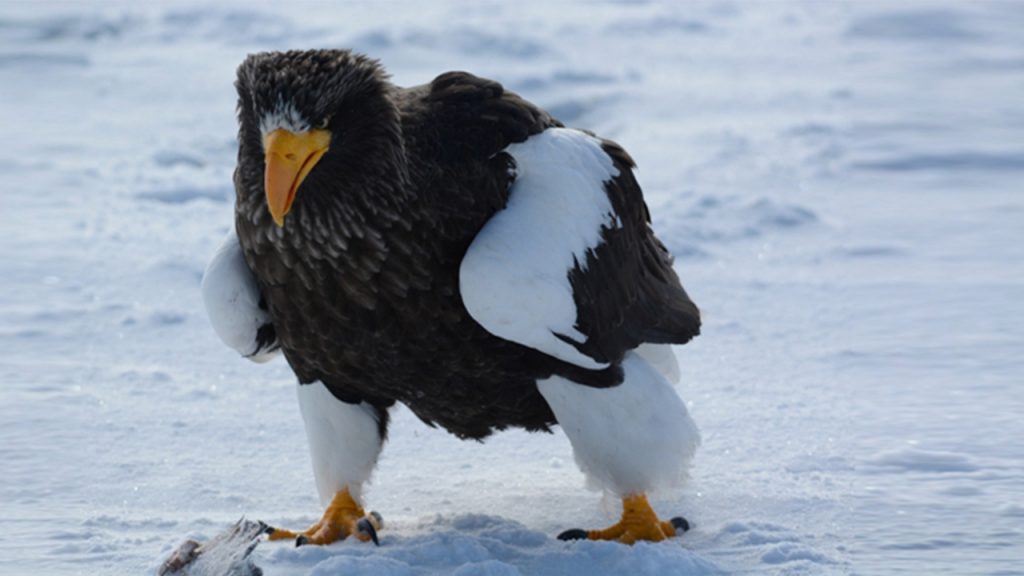

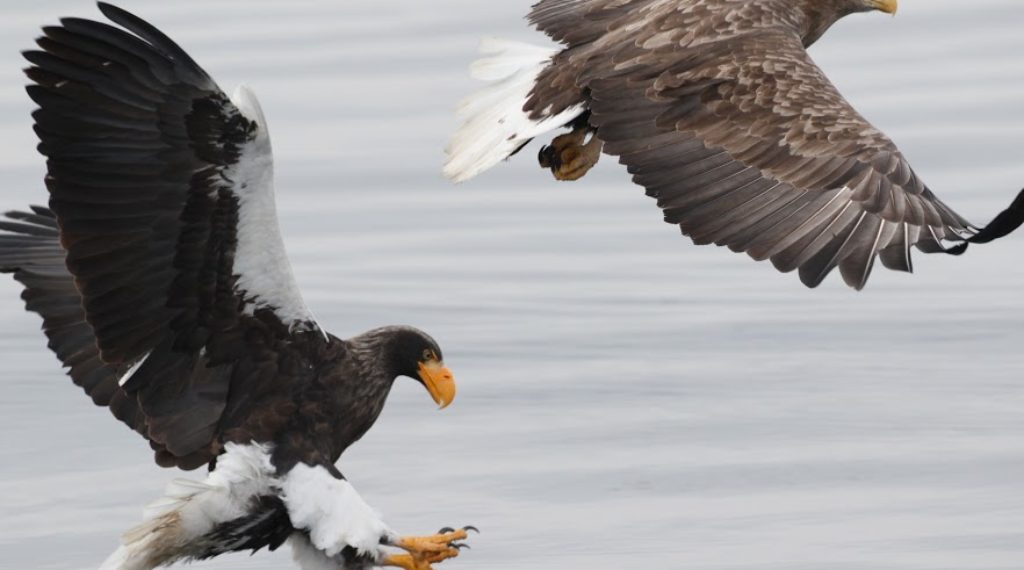
Tour Date:
Departures:
February 15-21 and March 1-7, 2026
Tour Price (Per Person):
US$ 2990 (minimum 5 people). Includes domestic flights, and bullet train to Karuizawa and car rental for the Snow Monkeys, all boat rides, transport, guiding and hotels.
Single supplement: TBA and depending on availability.
Tour Type:
Easy birding and culture
Japan: Birding, Steller’s Eagles, Sushi and Sake
Winter birding is an often overlooked part of the bird-watching experience and contrary to popular belief not all birds head south to take a vacation in southern climes. Birding Japan in the winter will provide you of one of the most rewarding trips you can take and Japan surely is the premier destination for winter birding.
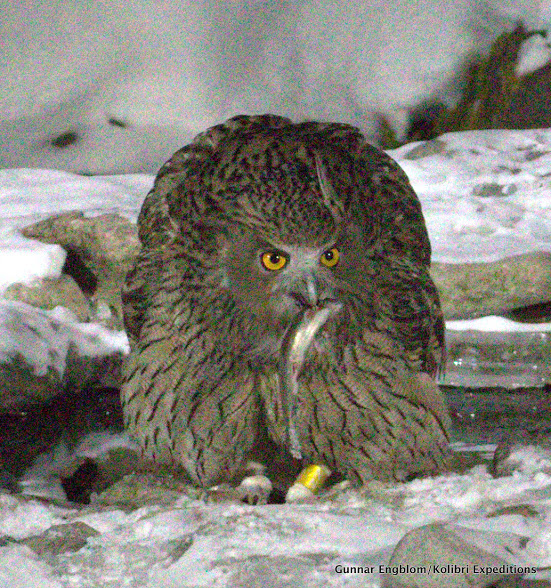
Itinerary Overview:
- Easy winter birding
- Steller’s Eagles, Japanese Cranes, Blakiston’s Fishing Owl and many more
- Variety of mammals
- Great birding in the Hokkaido winter wonderland
- Glimpses of the beautiful landscape, architecture and traditional lifestyle of Hokkaido including the use of an Onsen – Japanese hot spring resort hotels.
Tour Description:
Hokkaido – the Jewel of Winter Birding
Day 1. Arrival in Tokyo and flight to Kushiro
We fly in the afternoon from Haneda to Kushiro and check in at our comfortable hotel in town.
Day 2. Otowabashi bridge-Tsurui-Ural Owl-Yoroushi.
We shall start early for the the photography hotspot Otowabashi bridge to see Red-crowned Cranes and Whooper Swans in mystic mist and soft light of the sunrise. This is part of Kushiro Shitsugen National Park which was designated as a national park in 1987. Covering 270 sq. kilometers, it is recognised as the most important wetland (shitsugen) in Japan
Afterwards we continue to the Tsurui feeding area for the cranes. We can usually get some dancing birds here.
We stop at a stake-out for Ural Owl, hoping the the owl is still sitting exposed in the hole of a dead tree.
Continuing to Joroushi Onsen (hotspring) we often see Sika Deers and Red Fox at the roadside. The area next to the lodge is good for Crested Kingfisher, Brown Dipper, Solitary Snipe, Hawfinch and Bullfinch.
The feeder outside the dining room attracts Japanese Tit, Coal Tit, March Tit, Eurasian Jay, Brown-eared Bulbul, Great Spotted and White-backed Woodpeckers.
As dusk falls and while having an excellent Japanese Dinner we shall be watching the fish pond feeder for Blakiston’s Fish-Owl – the largest extant owl species weighing 4.5kg. The population in Japan is estimated at only 200 individuals. Night at the Joroushi Onsen Hotel. Take the opportunity to have a relaxing Japanese hot spring bath at the onsen.
Day 3. Yoroushi-Rausu.
We leave Yoroushi in the midmorning to transfer to Rausu. After lunch, we will do a boat trip to the pack ice for Steller’s and White-tailed Eagles. Other potential birds include: Greater Scaup, Black Scoter, Harlequin Ducks, Red-breasted Merganser, Pelagic Cormorant and various gulls including Slaty-backed, Glaucous, Glaucous-winged, Mew and Vega. Occasionally rare gulls such as Thayer’s Gull show up too. Larophiles will have a good time.
We continue photographing birds in the harbour and check into our hotel. Later we shall once again try for Blakiston’s Fish-Owl at Washinoyadu hides where the photography distance is more than Yoroushi, but there is no glass between us the owl if it shows up. Sometimes there is a long wait before the owl appears.
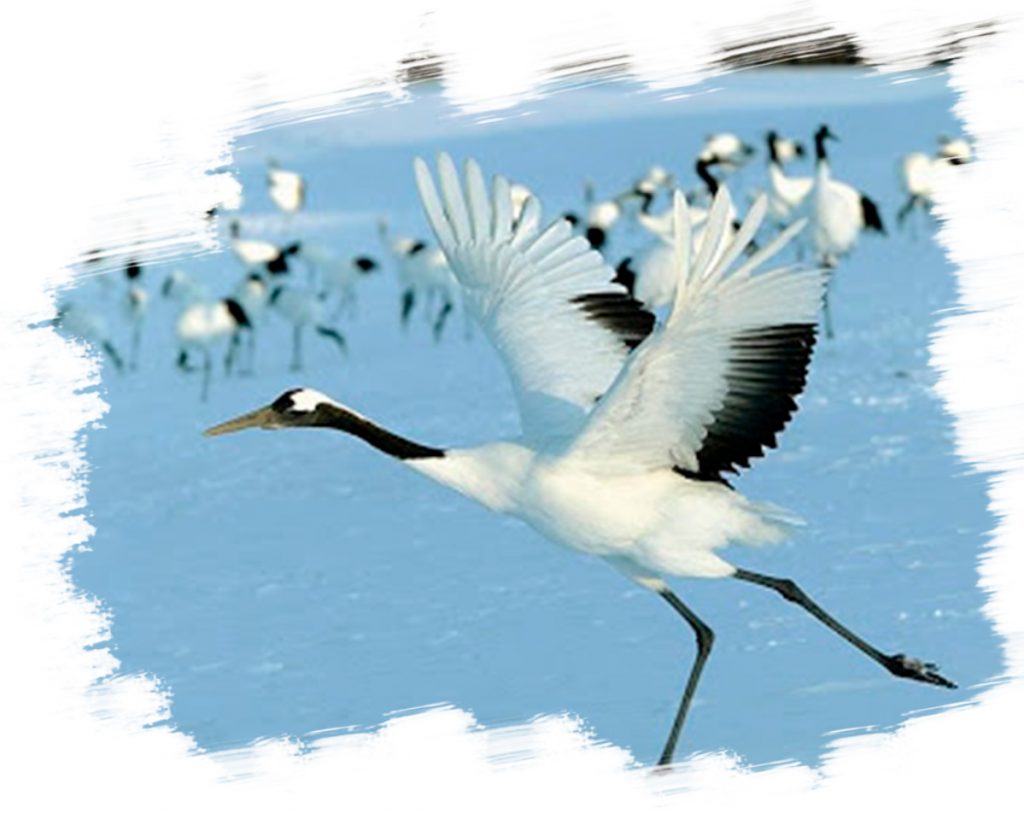
Day 4. Rauso-Nemuro-Teshikaga.
We continue south to Nemuro. Checking out sites on the way for migrants present.
From the port of Ochiishi we will do another 2 hour boat trip which is good for alcids. Here we can find Harlequin and Long-tailed Ducks, Greater Scaup, Black and White-winged Scoter, Common Goldeneye, Red-breasted Merganser, Common and Thick-billed Murre, Pigeon & Spectacled Guillemots, Ancient Murrelet, Least and Crested Auklet and Pelagic Cormorant.
After checking for Asian Rosy-Finch we continue to Teshikaga to stay at a small Onsen in order to be in range for Lake Kussharo the following morning.
Day 5. Kussharo Lake – Akan Crane Center – Fly to Tokyo.
The last morning we travel to Kussharo Lake. This is a famous spot to photograph Whooper Swans at very close range. The immediate area is also good for Gray-headed, Black and White-backed Woodpecker, as well as Bull Finch and Hazel Hen.
On the way to the airport we pass Akan International Crane Centre to see the truly remarkable conservation success story of the Red-crowned Crane (aka Japanese Crane). One hundred years ago the species was believed to be extinct in Japan. From a rediscovered population of 20 individuals through careful management the population has now reached 1000.
This afternoon we return to Tokyo. We shall transfer to Karuizawa with the bullet train to better use our time.
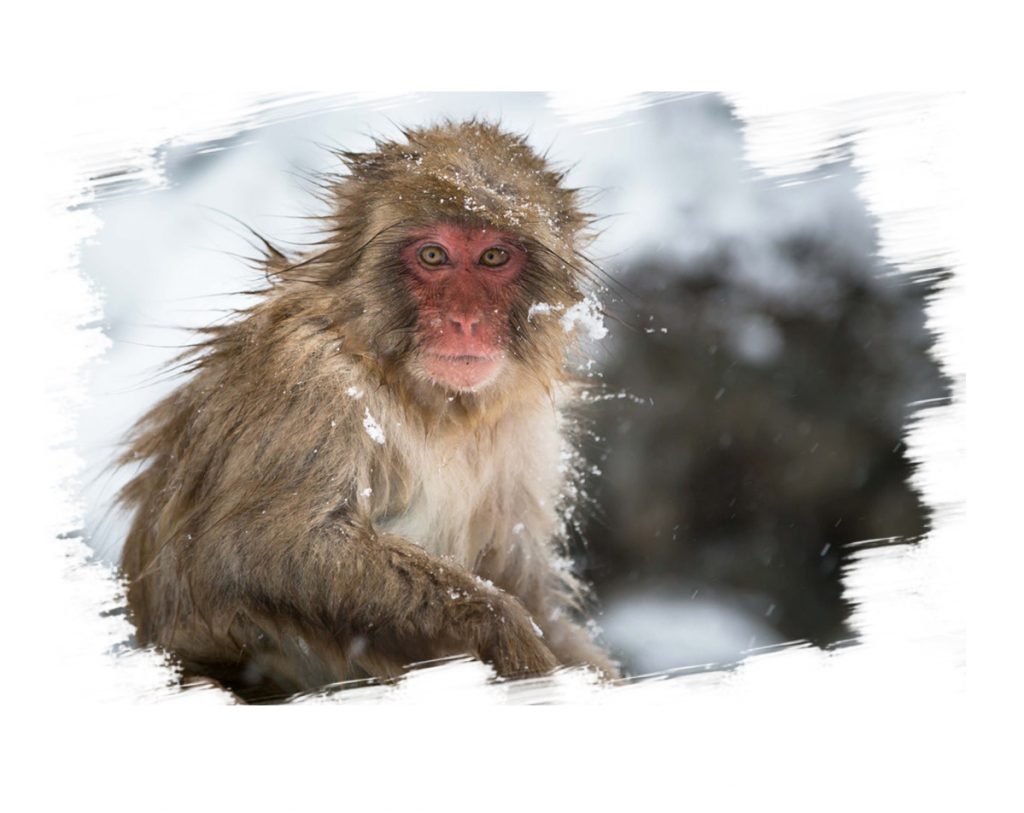
Day 6. Karuizawa – Jigokudani (Snow Monkey Park) – Tokyo
We shall bird Karuizawa in the morning for a couple of hours with species such as Japanese Green Woodpecker and Japanese Grosbeak possible – and with lots of luck Copper Pheasant. .
Then we continue with a rental car (and this way, avoid the tedious bus ride from Nagano) to Jigokudani Spa.
The name Jigokundani, translated to “Hell’s Valley”, comes from the eerie atmosphere of steam and boiling water that bubbles from the frozen ground. The ominous steep cliffs and wild forest add to the mystery and magic of the area that these Snow Monkeys call home during the winter months.
Birding will be sparse, but we shall still look out for some Japanese specialties such as Pygmy Woodpecker, Large-billed Crow, Varied and Japanese Tit, Alpine and Japanese Accentor and Asian Rosefinch being of particular interest.
We return later that afternoon to Tokyo, via the bullet train, taking in the countryside
Day 7. Tokyo.
The following day we do some exploration of Tokyo in the morning, especially Hibiya Park and the moats next to the Imperial Palace. Here you may see Azure-winged Magpie, Pygmy Woodpecker, Dusky Thrush, White-cheeked Starling, Brown-eared Bulbul and Varied Tit, and a number of waterbirds such as Falcated Duck, Wigeon, Tufted Duck, Great Cormorant and Little Grebe. By midday end of service.
Included. All hotels, flight to Hokkaido, transport in rental cars, bullet train, subway in Tokyo during transfer to Karuizawa and the expert guiding and all sea excursions.
Not included: meals, except at Yoroushi and breakfast in Rauso.
For lunch and breakfast we often rely on the excellent assortment of prepared food at Japanese 7-Eleven or similar .
Pre and Post-tour EXTENSIONS 2026.
Before and after the set departure, we offer three short trips as pre-tours which can be taken back to back or as individual shorter trips.
Pretrip. Izumi area for four species of Cranes.
Friday to Sunday. Feb 13-15 and Feb 27 to Mar 1.
Friday. Fly to Kagoshima in the morning. Pick up rental car. Drive to Izumi with stops on the way. Hooded and White-naped Cranes are most numerous, and there are a few Sandhill and Common Cranes as well.
Rare visitors are Siberian Crane and Demoiselle Crane. We may also check a site for Saunders Gull and Black-faced Spoonbill on the coast.
Saturday.
We shall check the fly in of the cranes in the morning and then make our way to Miike Lake which has nice forest and is very scenic, so we’d spend a couple of hours there. We’ll check the lake for ducks. The birds of the forest has high degree of overlap with Okinawa, so it is OK that we don’t spend too much time here. Main target is the endemic Ryukyu Minivet, which is easier here than on Okinawa,
We continue in the afternoon to Hyuga/Kadogawa on the East coast. The main target here is the Japanese Murrelet which breeds nearby.
Sunday.
We shall make a short boat trip to look for the Murrelet. Other birds in the area include Japanese Wood Pigeon, Temminck’s Cormorant, Pale Thrush and Daurian Redstart during the winter, as well as the introduced Red-billed Leiothrix.
We’ll drive south to Miyazaki to return the car and then fly to Haneda and on to Kushiro if your main tour follows.
Cost: $1450.
Includes flights, car hire, hotels and entrance fees. Meals are not included.
Post extensions Feb 21-25 and Mar 7-11
Myiake-Jima Pelagic Feb 21 and Mar 7
Feb 21-22 and Mar 7-8
Saturday . Departure 10:30 pm. We can leave luggage we don’t need in lockers at our nearby hotel. Note that we shall walk around on the island, so we want to carry as little as possible
Sunday. Arrive in Myiakejima at 5.AM. Breakfast/coffee in the port and then a bus to start birding the island at sunrise. Targets include Japanese Wood Pigeon, Owston’s Tit, Japanese Bush Warbler and the toughest bird of all Izu Thrush.
We have to be on the other side of the island for the return to Tokyo at 12.30 pm.
It will take a few hours to reach The Oshima triangle – an area off Oshima island is the area where the seabirds congregate. Good to have something to eat or some rest onboard before we get there.
Seabirds include Short-tailed, Laysan, and Black-footed albatrosses, Streaked Shearwater, Northern Fulmar, Tristram’s Storm-Petrel and with some luck Japanese Murrelet.
We are back at port at 7:50 pm.
Hotel nearby for those who continue to Okinawa.
Price: $560
Includes only basic sleeping arrangements on the boat.
You could upgrade in the port if you like more comfort, but you will likely find it unnecessary for just a few hours of sleep.
There is a restaurant on board and vending machines for Ramen and similar. Meals are cheap, but not included,
Okinawa
Feb 23-25 and Mar 9-11
Monday. Early flight to Naha, Okinawa.
For the first night, we shall use a hotel that we have used previously. Japanese Style. They have basic rooms with shared bath which are OK. They also have private larger cabins, but there is a significant surcharge for those who like (around $120 or so).
The reason I use this hotel above town is that we had Okinawa Woodpecker in the forest patch next to the hotel in the morning. It can be tricky on the main road so it gives us an additional spot for this threatened species.
Tuesday. The second night we use Ada Garden Hotel Okinawa where most birding groups stay. It makes it much closer to look for Okinawa Rail on a second attempt if still needed.
We also look for Okinawa Robin, Ryukyu Scops Owl and Ryukyu Green Pigeon.
Wednesday. We have plenty of time to get back to Naha for our flights to Tokyo and Kyoto. On our way to the airport there are reliable sites for Black-faced Spoonbill.
Cost: $1320 including flights.
Birding in Tokyo
On Thursday February 26, there is an optional day of birding in Tokyo, using public transport to chase down some local rarities which may have shown up in the vicinity. Birds we have chased in Tokyo in the past include Japanese Waxwing, Japanese Grosbeak, Greater Painted-Snipe, Azure-winged Magpie, Baird’s Pochard and many more.
Price of this excursion is $220. Hotel and food is additional.
